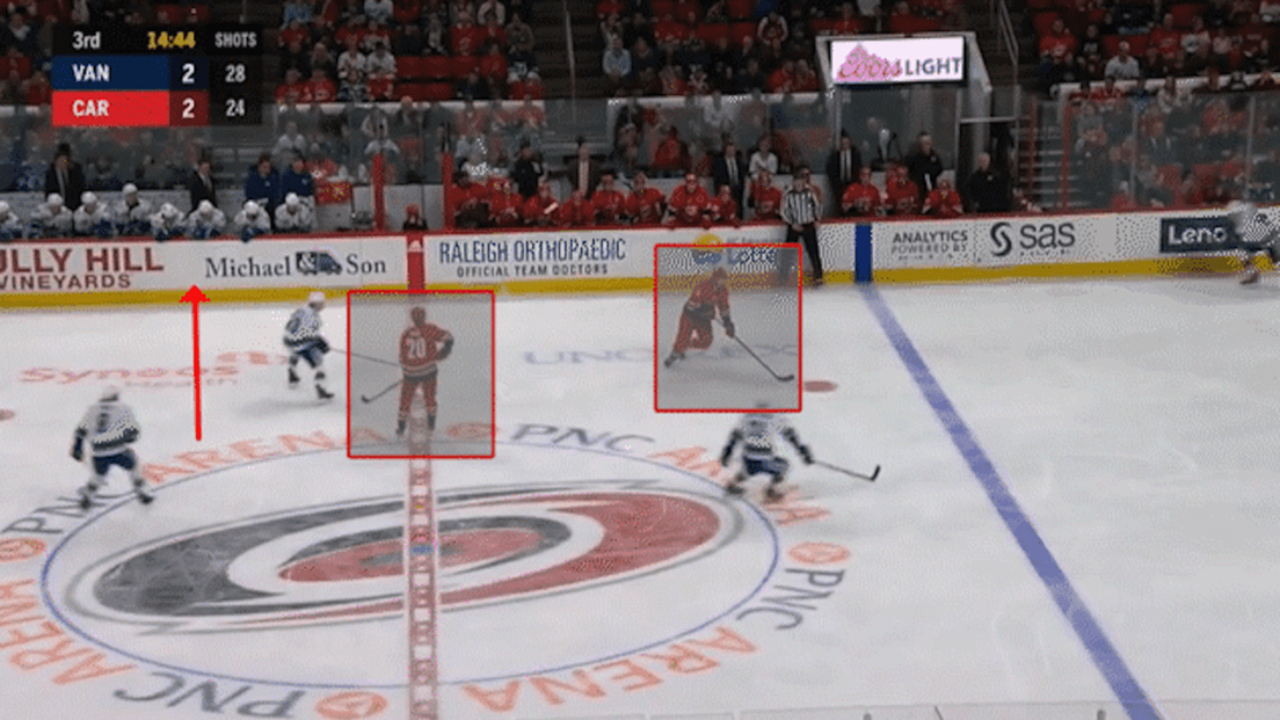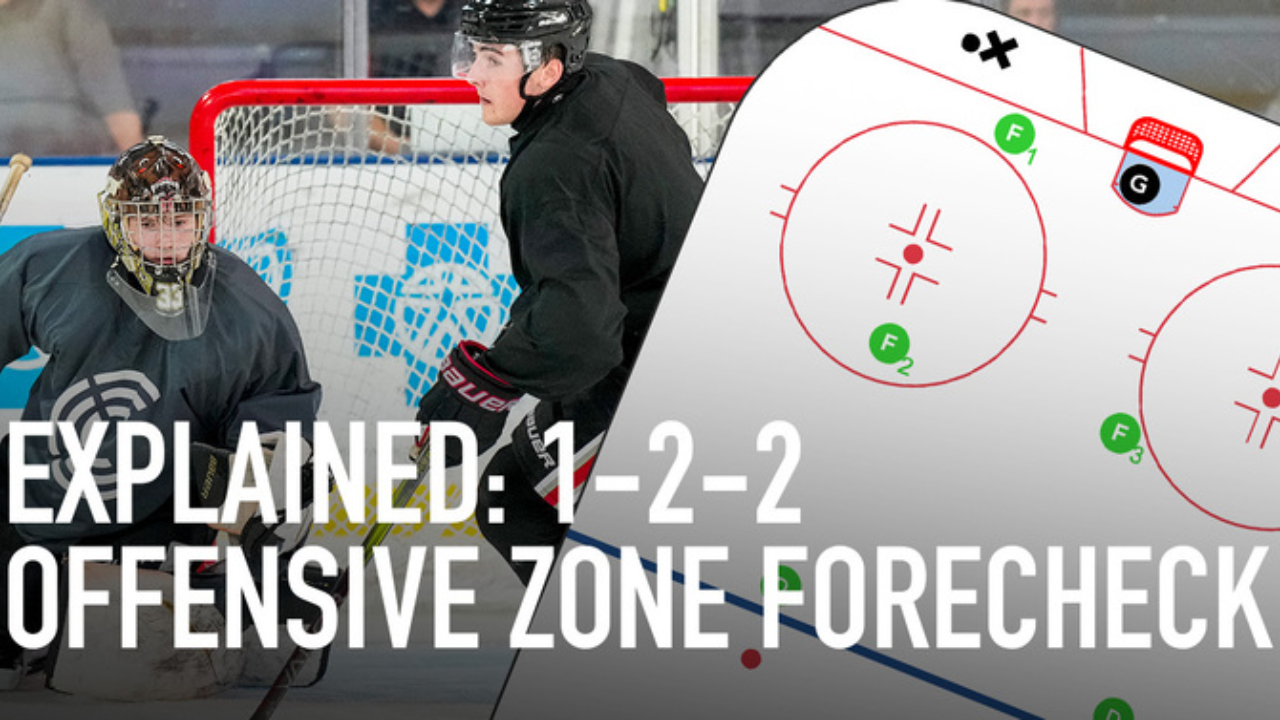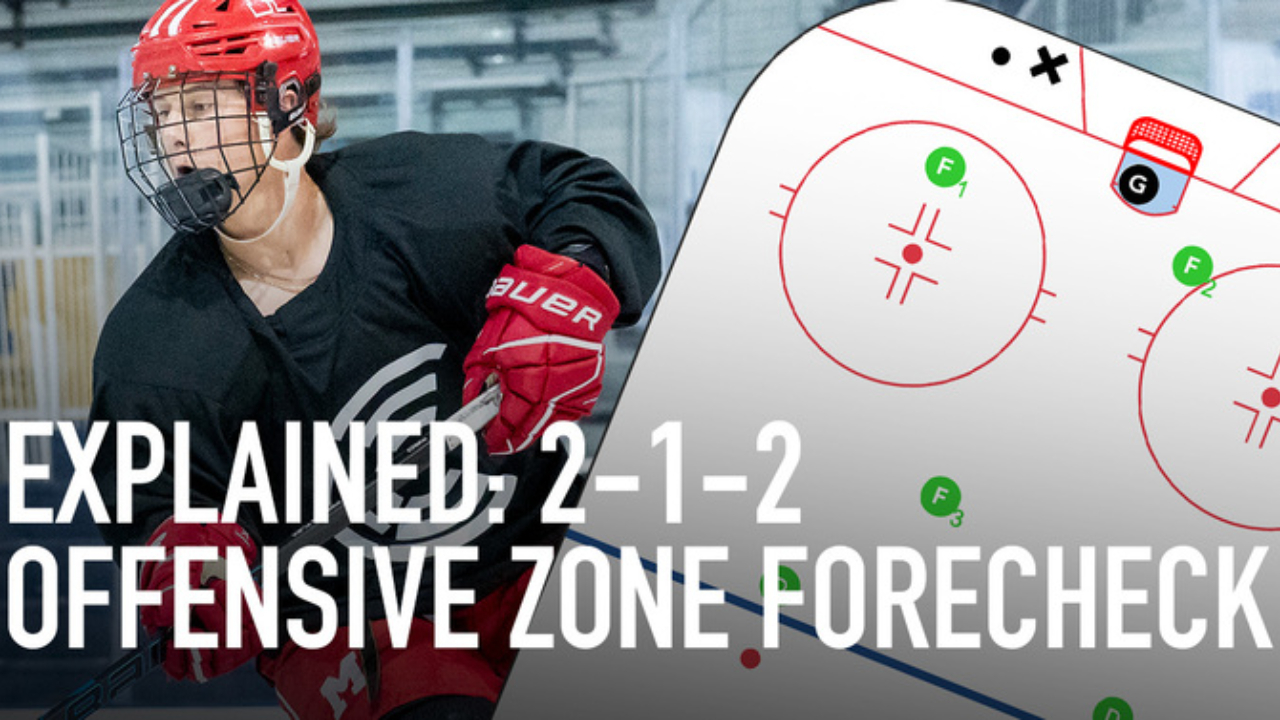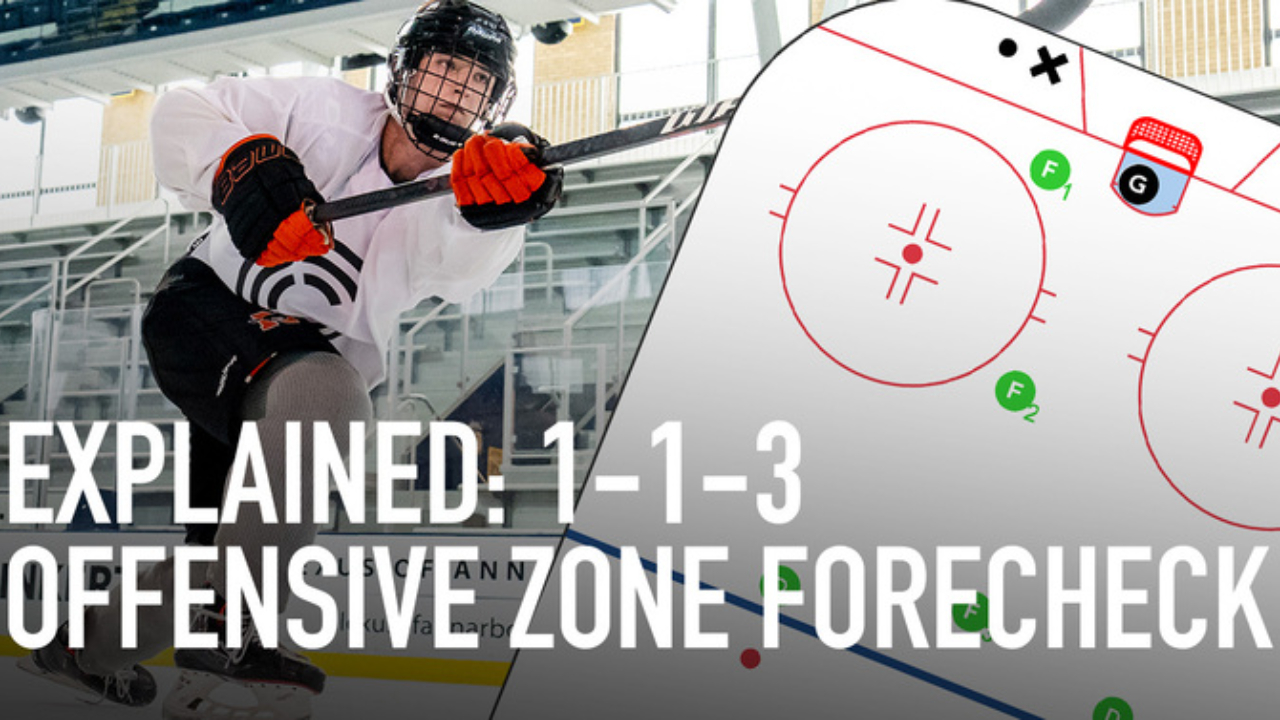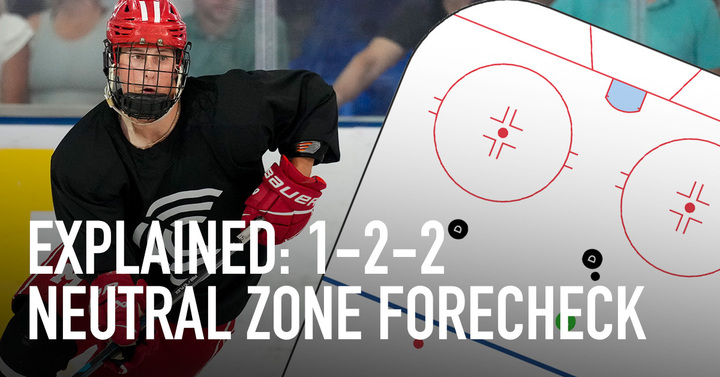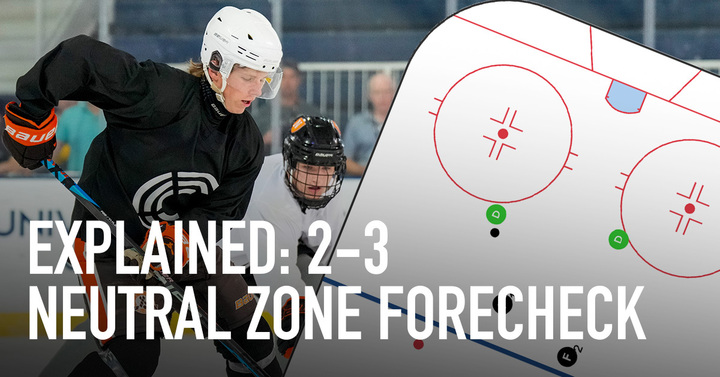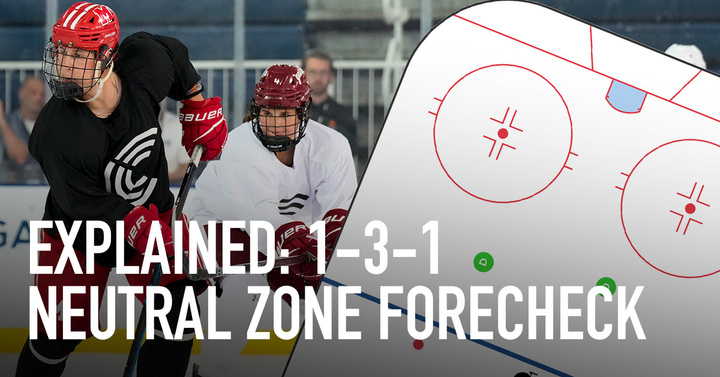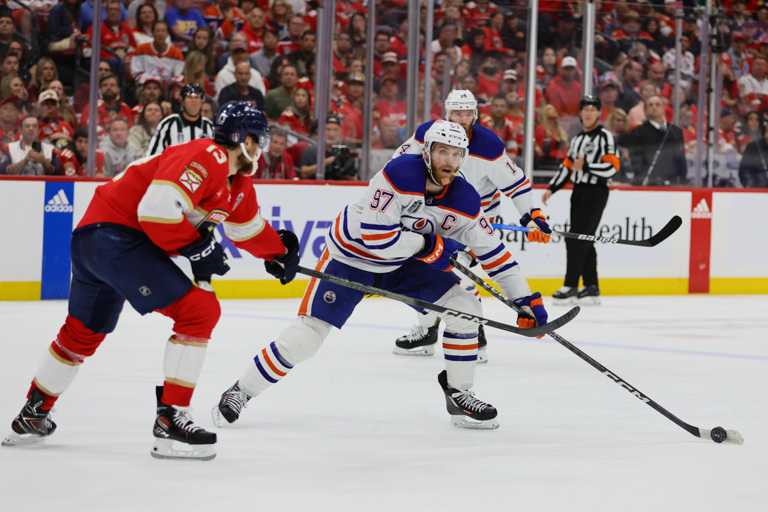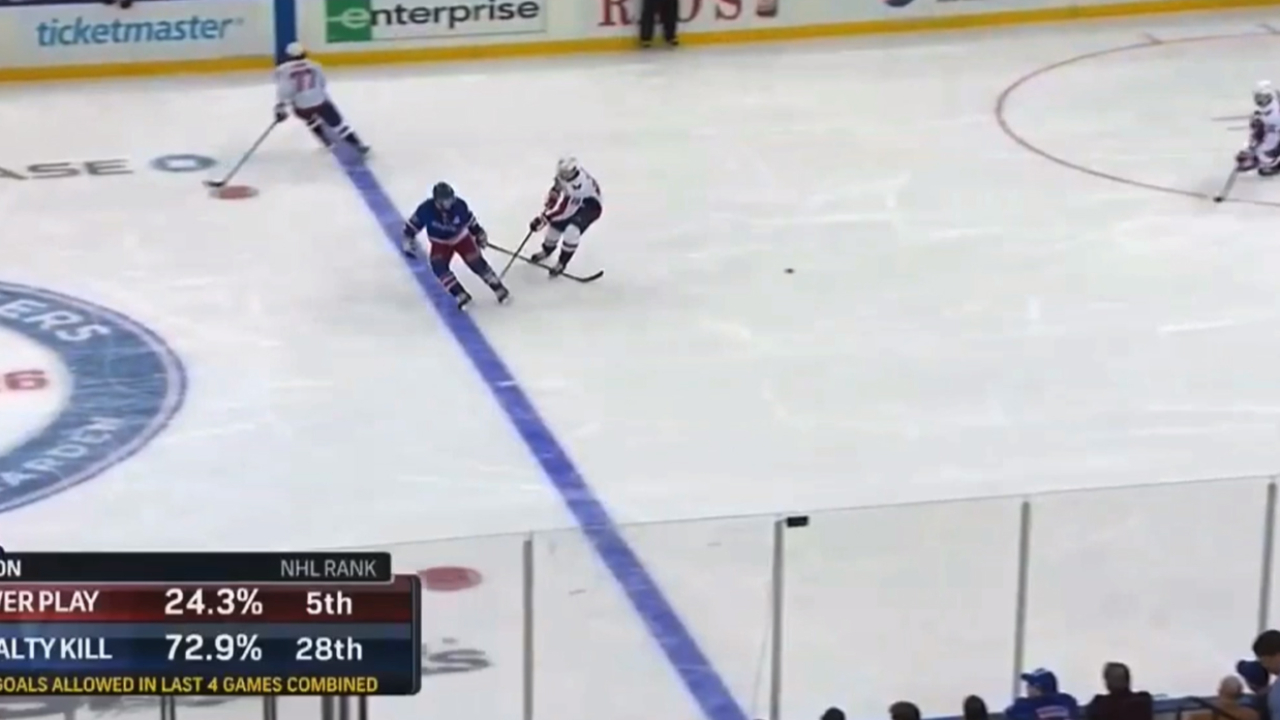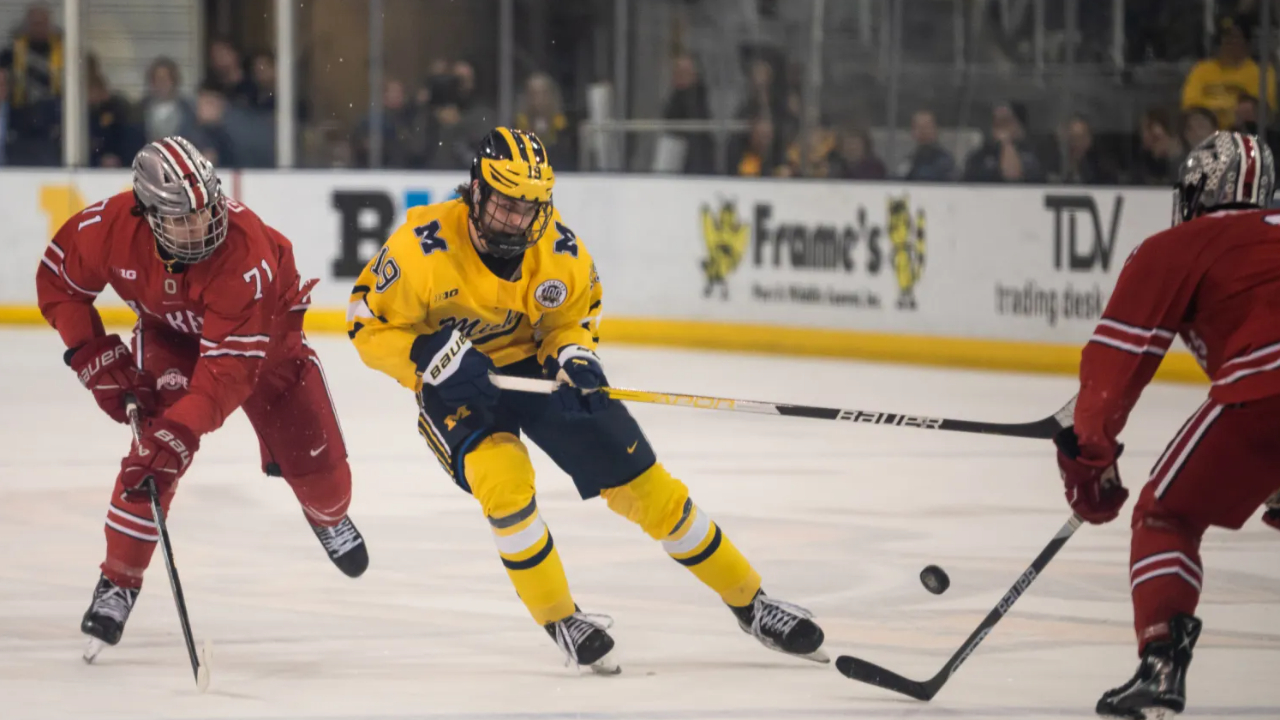
Aggressive forechecking, regardless of their formations, while disruptive, can be countered with well-structured neutral zone strategies. Navigation through or around an aggressive forecheck is best created in offensive NZ play. Here are some concepts to consider::
-
Creating Depth Behind the Forecheck:
-
Teams can drop one or two players behind the aggressive forecheck, creating space and time for defensemen or playmakers to regroup and make intelligent decisions with the puck.
-
Defensemen can execute hinge plays, directing the puck back (deep) and then quickly transitioning it across, diagonally up the ice to exploit gaps in the forecheck.
-
Counter-Attacks and Puck Support:
-
Utilizing depth also allows quick counter-attacks where forwards positioned behind the forecheck can receive the puck with speed and space, enabling them to break into the offensive zone more effectively.
-
Strong puck support with players moving in unison ensures multiple passing lanes and skating options are available.
Generating Speed Through Skating Patterns
Generating speed in the NZ can be achieved through deliberate and established skating patterns and tactical movement:
-
Cross-Lane and Wide Sweeping Skating Patterns:
-
Forwards can use cross-lane movements and wide sweeping skating patterns to create lateral movement, which opens up the ice and forces defenders to adjust their positioning as they face numerical advantage at speed.
-
These patterns make it difficult for defenders to predict the direction of the attack, leading to defensive breakdowns and creating opportunities for controlled zone entries.
-
Layered Offense:
-
Teams can create multi-dimensional threats by layering forwards, with one attacking the blue line while others supporting from behind or wide. This ensures that if the first option is denied, there are secondary and tertiary options available.
Tactical Transitions vs. Opportunistic Plays
Moving away from opportunistic plays off broken situations towards more structured, tactical transitions can enhance a team's effectiveness in the neutral zone. According to NHL statistics, teams that effectively manage puck possession in the neutral zone often outperform those that rely solely on quick transitions and broken plays. For instance, data from the 2022-2023 NHL season shows that teams like the Tampa Bay Lightning and Colorado Avalanche, known for their structured neutral zone play, maintained an average zone entry success rate of over 55%, significantly higher than the league average of around 45%. These teams also demonstrated higher puck possession times in the neutral zone, averaging around 45 seconds per possession compared to the league average of 30 seconds. Use of:
-
Planned Breakouts:
-
Defensemen and forwards can coordinate planned breakouts, where the puck is moved with purpose from the DZ but by extension through the neutral zone using pre-determined routes and support systems.
-
This reduces the reliance on improvisational dumps and chases, favouring controlled entries that maintain possession and offensive pressure.
-
Regrouping and Re-Entries:
-
Effective use of regrouping allows teams to reset and re-attack the offensive zone with better positioning and speed. By pulling back and reorganizing, teams can exploit defensive lapses and find seams through the neutral zone.
-
Regrouping also allows for tactical re-entries where players can synchronize their movements to enter the zone with greater speed and full puck control.
Enhancing Neutral Zone Play
To fully capitalize on the potential of the neutral zone, teams need to integrate these sophisticated strategies into their overall game plan:
-
Training and Practice:
-
Coaches should emphasize NZP strategies in practice, focusing on drills that enhance players' ability to execute cross-lane passes, use wide skating patterns, and support each other through tactical movements.
-
Simulated forechecking scenarios can help players develop the skills and awareness needed to counter aggressive defences.
-
Analytics and Adaptation:
-
Utilizing advanced analytics can provide insights into how teams are performing in the neutral zone. Tracking metrics like successful zone entries, puck possession time, and pass completion rates can help refine strategies.
-
Continuous adaptation based on opponent tendencies and game situations ensures that NZP remains a dynamic and effective part of the team's strategy.
Conclusion
While the modern trend in ice hockey has often focused on speed and quick transitions, revisiting and refining neutral zone play can provide significant strategic advantages. By employing tactics that counter aggressive forechecks, generating speed through deliberate skating patterns, and emphasizing tactical transitions, teams can elevate their play. This approach not only enhances puck possession but also creates more controlled and sustained offensive opportunities, ultimately leading to greater success on the ice.

